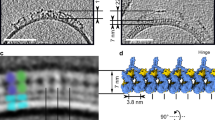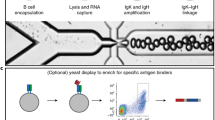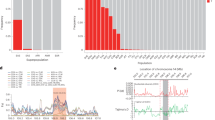Abstract
IMMUNE haemagglutination is the combination of bivalent antibody molecules with specific antigenic determinants on the surface of red cells and the coincident collision of red cells resulting in the formation of antibody cross-linkages between cells and visible aggregation1,2. As a means of characterizing immune haemagglutination, rates of red cell aggregation were examined with the aid of a Coulter electronic cell counter3. In the course of this examination it was empirically found that the initial decrease in free cell concentration followed an exponential decay curve. There was no basis, however, for considering aggregation to be a first-order reaction. Subsequent consideration suggested that aggregation involved an orderly sequence which might be expressed mathematically.
Similar content being viewed by others
Article PDF
References
Gynes, L., and Sehon, A. A., J. Immunol., 89, 483 (1962).
Fudenberg, H. H., Mandy, W. J., and Nisonoff, A., J. Clin. Invest., 41, 2123 (1962).
Ming, T. K., Severson, C., and Goodman, H. S., J. Immunol., 93, 567 (1964).
Atwood, K. C., Proc. U.S. Nat. Acad. Sci., 44, 1954 (1958).
Roitt, I. M., and Doniach, D., Lancet, ii, 1027 (1958).
Goodman, H. S., Transfusion, 2, 327 (1962).
Author information
Authors and Affiliations
Rights and permissions
About this article
Cite this article
MING, T., GOODMAN, H. & BROWN, B. Mathematical Model for the Process of Aggregation in Immune Agglutination. Nature 208, 84–85 (1965). https://doi.org/10.1038/208084a0
Published:
Issue date:
DOI: https://doi.org/10.1038/208084a0
This article is cited by
-
Theory of antigen-antibody induced particulate aggregation—II theoretical analysis and comparison with experimental results
Bulletin of Mathematical Biology (1980)
-
Thermal dissociation of antigen-antibody-antigen-like systems
Bulletin of Mathematical Biology (1973)



